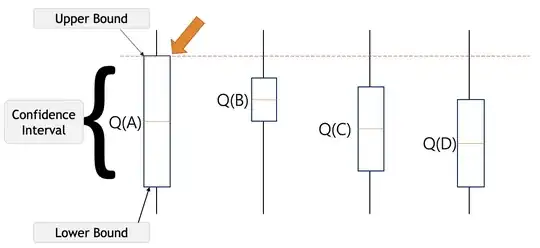I'm a bit confused about the visualization of the upper bound (following the notation of (c.f. Sutton & Barto (2018))
$$Q_t(a)+C\sqrt{\frac{\mathrm{ln}(t)}{N_t(a)}}$$
In many blog posts about the UCB(1)-algorithm, such as visualized in the following image (c.f. Link ):

Isn't the upper (confidence) bound simply the upper bound of a one-sided confidence interval instead of a two-sided confidence interval as shown in the image above? A lower bound of the interval is completely useless in this case, or am I wrong?